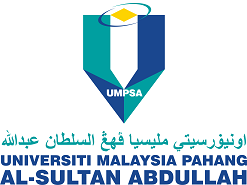APPLICATION OF THERMODYNAMIC MODELLING AND EXPERIMENTAL INVESTIGATION OF LEACHING YTTRIUM FROM LIQUID CRYSTAL DISPLAY
DOI:
https://doi.org/10.15282/jceib.v3i1.3872Keywords:
Yttrium, Liquid Crystal Display, Leaching, Modelling, SpectroscopyAbstract
Thermodynamic modelling, experiment, measurement, and characterization technique were used to evaluate the leaching process of yttrium (Y) elements from liquid crystal display (LCD) electronic waste (e-waste). Thermodynamic modelling using HSC 6.0 software revealed that the reaction of leaching out Y with hydrochloric acid is endothermic thus absorbing heat and at the same time positive Gibbs free energy from temperature 273.15 K to 343.15 K and negative Gibbs free energy from temperature 353.15 K to 373.15 K. Thermodynamic data of the leaching processes with sulfuric and nitric acids show that the reactions are exothermic thus release heat and at the same time negative Gibbs free energy from temperature 273.15K and above. The leaching reaction with sulfuric and nitric acids identified to be reversible from temperature 273.15 K and above due to the negative entropy change, whereas the reaction was found irreversible for the hydrochloric acid solution due to the positive entropy change at the similar minimum temperature setting. The significance of reversibility versus irreversibility is their relationship to the efficiency. The equilibrium constant show that the leaching process with hydrochloric acid is less than 1 (Log K<1) from temperature 273.15 K to 343.15 K indicate that the backward reaction is favored while from temperature 353.15 K to 373.15 K have a positive equilibrium constant (Log K>1) thus indicate that
forward reaction is favored. Leaching process with sulfuric and nitric acids shows that the positive equilibrium constant (Log K>1) which indicate that forward reaction is favored from temperature 273.15 K and above. The Pourbaix diagram modelling showed that Y dissolved in HCl at pH below 7 therefore strong reducing agents such as sulfuric acid (sulfide) can improve the dissolution of Y. Inductively coupled plasma mass spectroscopy (ICP-MS) results showed that only Y is viable to be efficiently leached from the studied LCD, e-waste either in a single-stage or in two-stage leaching
mode. Sulfuric and nitric acids are found to be the most practical solutions in leaching out the Y element whereby around 0.00515 ppm and 0.00507 ppm of Y were dissolved in both solutions respectively based on the two-stages leaching approach.



